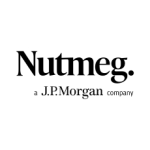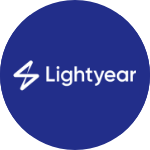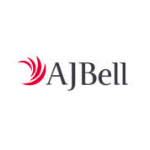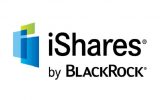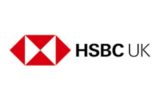Best Low Cost Income ETF Funds – 3 Top Picks
Looking for low cost income fund investment ideas?
See 3 ETF funds that pay high income.
We also outline some of the features you should look for an ETF fund & some factors to consider when selecting an investment platform for the fund you invest in.
These 3 funds featured below can be put in an ISA, junior ISA or Self Invested Pension (SIPP) or as a direct investment from £25 per month.
1. iShares UK Dividend UCITS ETF
Available via: Hargreaves Lansdown Platform »
With this ETF fund stocks are weighted by their 1 year forecast dividend yield and not their market capitalisation and are reviewed twice a year.
The ETF fund gives diversified exposure to UK companies with higher yields making up the FTSE-350 Index along with direct investment into 50 UK companies with a focus on income.
2. HSBC ETFS PLC FTSE 100 UCITS ETF
Available via: Hargreaves Lansdown Platform »
The investment objective of this Fund is to replicate the performance of the FTSE 100 Index (the “Index”), whilst minimising as far as possible the tracking error between fund performance and the Index.
The Index is a market capitalised weighted Index designed to measure the performance of the 100 largest companies in the UK.
3. iShares Core FTSE 100 UCITS ETF
Available via: Interactive Investor Platform »
This fund is an exchange traded fund (ETF) that aims to track the performance of the FTSE 100 Index as closely as possible. The ETF invests in physical index securities. The FTSE 100 Index offers exposure to the 100 largest UK stocks by full market value.
What is a ETF fund?
An exchange traded funds (ETFs) are investments that look to track a set of shares or a particular market index.
They are passive investments and typically are a basket of equities that trade on an exchange.
With ETFs prices move up and down all day as they are bought and sold. The basket of equities can include a range of investments including bonds, commodities and international holdings. Typically ETFs are low cost.
What types of ETF are there?
There are a wide range of ETFs to choose from.
The ETF funds above are very much focussed on the UK stockmarket, where traditionally dividend yields for companies are high.
ETFs can be used for as well as income generation on a regular basis, capital growth, risk offsetting and speculation.
See a range of ETFs:
- Index ETFs – Many people associate ETFs with a selected index. E.g. Two of the funds above track the FTSE 100 Index which makes up the 100 largest firms on the London stock exchange by capitalisation. As well as index ETFs on stocks and shares, ETFs can track bonds, commodities and currency indices. Index trackers will seek to closely match the performance of the real index, through replication of the basket of investments
- Bond ETFs – For income seekers bond etfs often make up a key part of a portfolio. There is a wide range of bonds available with a range of maturity ranges. Whilst high yields may look attractive it is important for investors to understand that higher yield usually reflects the credit risk of the bond.
- International ETFs – allows you to diversify investment risk by getting exposure to other economies. So it possible to invest in ETFs which have a basket of companies that operate across a region such as South East Asia in different countries.
- Commodity ETFs – You can gain exposure to ETFs which hold physical commodities such as gold, or use futures to replicate exposure. Alternatively you can invest in commodities that are equity based where the companies you are investing are exposed to a certain commodity market e.g. silver
What is the cheapest way to invest in a ETF fund?
One of the main attractions of investing in ETFs is that because they are passive investments where no fund manager is involved the annual ongoing costs are much lower than managed fund equivalents.
Over time the impact of ongoing charges can have a significant impact on your investment value, so ETF funds are a good way to get low cost exposure to the stock market.
A way to compare funds based on cost is to contrast the OCF (Ongoing Charge Figure) which represents the total annual cost of running the fund including administrative costs.
Below we have selected 3 Top Low Cost FTSE 100 Tracker Funds:
iShares FTSE UK Dividend
OCF – 0.40%
HSBC ETFS PLC FTSE 100 UCITS ETF
OCF – 0.07%
iShares Core FTSE 100 UCITS ETF
OCF – 0.07%
What is the best investment platform to use for an ETF fund?
Investors in selecting a home for their investment picks have a lot of options to select from.
One of the key considerations is cost. However picking the “cheapest” is not as simple as it sounds, as each platform has its own costing model which often makes it difficult to compare like for like. Below we have outlined what can expect to pay in charges for 4 of the UK’s largest most popular investment platforms based on investing in a low cost tracker fund (iShares Core FTSE 100 UCITS ETF).
| Investment Platform | Annual Platform Fee | iShares OCF Fund Charge |
Annual Charge on £10,000 |
Annual Charge on £20,000 |
Annual Charge on £40,000 |
Annual Charge on £100,000 |
Annual Charge on £250,000 |
|---|---|---|---|---|---|---|---|
| Interactive Investor | £9.99 pm flat fee | 0.7% | £126.88 | £133.88 | £154.88 | £189.88 | £294.88 |
| Hargreaves Lansdown | 0.45% up to £249,999, reducing to 0.25% from £250,000 to £1m, reducing to 0.10% from £1m to £2m. No fee for assets over £2m |
0.7% | £52 | £104 | £208 | £520 | £1,300 |
| AJ Bell | 0.25% on first £250K | 0.7% | £32 | £64 | £128 | £320 | £800 |
| Fidelity | 0.35% from £7,500 to £249,999, reducing to 0.2% from £250,000 to £1m. No fee for assets over £1m |
0.7% | £42 | £84 | £164 | £420 | £675 |
As you can see the right investment platform for your ETFs will depend on how much you are investing.
Other considerations include:
- Ease of use – What tools and research is on offer
- Fund discounts – Different platforms have negotiated different discounts on funds
- Customer reviews – Good to understand the strengths and weaknesses of platform providers
- Customer service provider
Important Risk Information:
This website contains information only and does not constitute advice or a personal recommendation in any way whatsoever. The value of investments and income from them can fall as well as rise and you may not get back the full amount invested. The tax efficiency of ISAs is based on current tax law and there is no guarantee that tax rules will stay the same in the future.
Different types of investment carry different levels of risk and may not be suitable for all investors. Prior to making any decision to invest, you should ensure that you are familiar with the risks associated with a particular investment and should read the product literature. If you are in any doubt as to the suitability of a particular investment, both in respect of its objectives and its risk profile, you should seek independent financial advice.
Tags


